Installing a computer
You have a new computer and you are ready to set it up. This may seem like an overwhelming and complicated task, but it's actually a lot easier than you think. Most computers are set up similarly, so it doesn't matter what brand of computer you have.
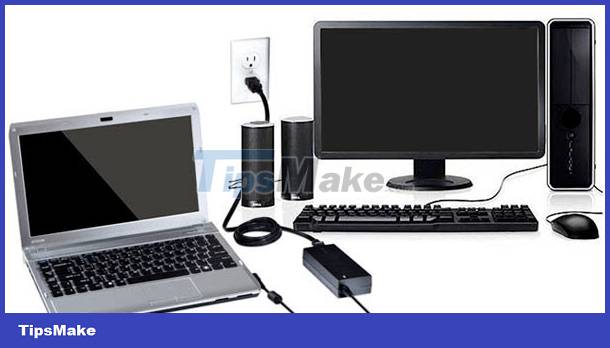 Installing a computer
Installing a computer
If you're installing a new computer that's still in the box, you'll probably find a how-to guide that includes step-by-step details. Even if it doesn't come with an instruction manual, you can still set up your computer in a few simple steps. We'll walk you through the steps needed to set up a computer.
How to install a laptop
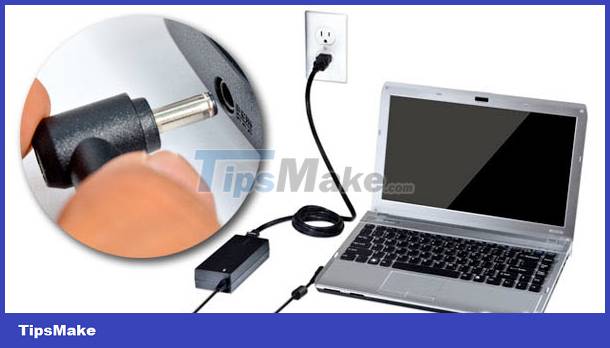 Installing a laptop
Installing a laptop
If you have a laptop, installation is easy. You just need to open the laptop and press the power button. If the Battery is not charged, you will need to plug in the supplied AC adapter to charge the Battery. You can continue to use the laptop while it is charging.
If your laptop has any peripherals, such as external speakers, you can see the installation instructions below. Laptops and desktops often use the same connection types, so the same installation steps will still apply.
How to install a desktop computer
first
Prepare
 Open the box of the monitor and the computer case
Open the box of the monitor and the computer case
Open the box of the monitor and the computer case. Remove plastic coatings, foam or protective tape. Place your monitor and computer case on your desk or work area.
- Make sure to place your computer case in a place that is well ventilated and has good airflow. This will prevent the computer from overheating during operation.
- Some monitors may not have a stand installed, please refer to the manual for installation and usage instructions.
2
Plug in the display cable
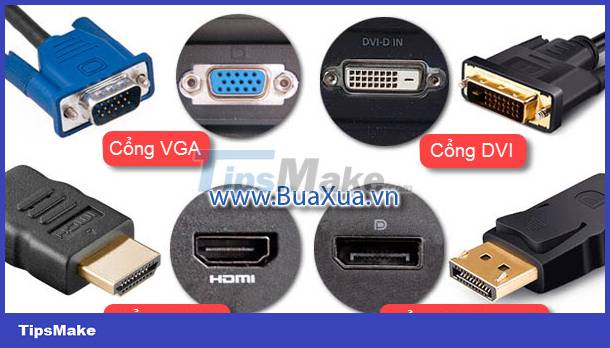 Identify the display cable type and display cable port location
Identify the display cable type and display cable port location
Locate the display cable plug. There are a number of different types of display cables, and some monitors can also be equipped with a variety of ports to suit the needs of the user. Once determined, connect one end of the cable to the display port on the back of the computer case and the other end to the monitor.
- Pay attention to the shape and direction of the ports and cables. If the plug does not fit, check again, do not force it, otherwise you may damage the plugs. Make sure the cable is firmly plugged into the port, then tighten the screws on the end of the cable to secure it to the port if it is present.
- If the display cable has two different ends, please refer to the user manual.
3
Plug in the keyboard cord
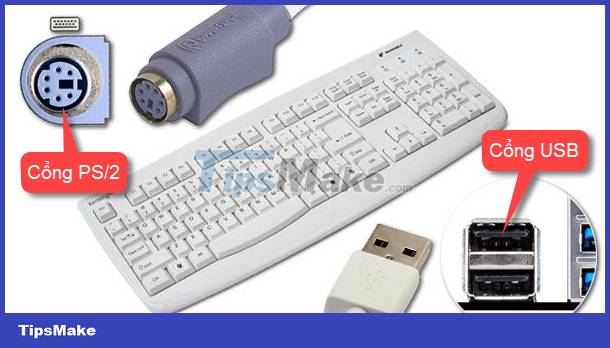 Plug the keyboard cable into the computer
Plug the keyboard cable into the computer
Open the keyboard box and determine if it uses a USB connector or a PS/2 connector. If it uses a USB connector, plug it into any USB port on the back of your computer. If it uses a PS/2 connector, plug it into the purple keyboard port on the back of the computer.
4
Plug in the mouse cord
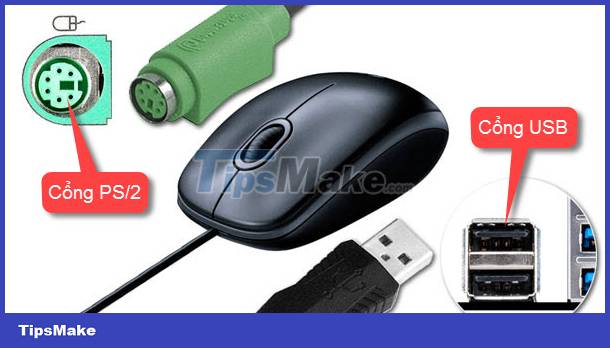 Plug the mouse into the computer
Plug the mouse into the computer
Determines whether the mouse uses a USB or PS/2 connector. If it uses a USB connector, plug it into any USB port on the back of your computer. If it uses a PS/2 connector, plug it into the green mouse port on the back of the computer.
- If you have a wireless mouse or keyboard, you need to insert Batteries into them and then plug the receiver into the USB port on the back of your computer.
- If you have a USB mouse or keyboard, plug them into a black or white USB 2.0 port. Save the blue USB 3.0 port for devices that need higher speed such as printers, USB drives, etc.
- If on your computer there is only one PS/2 port shared for both the keyboard and mouse, you can plug a keyboard or mouse into this port, the other must use the USB port.
5
Plug in the network cable
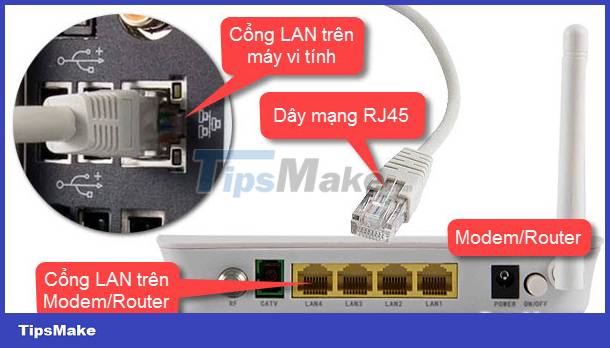 Plug the Internet cable into the LAN port on the computer
Plug the Internet cable into the LAN port on the computer
If you use a local network or the Internet, connect the network cable between the Modem/Router and the LAN port located on the back of the computer case.
If your computer uses a wireless network device, skip this step.
6
Plug in speaker wire
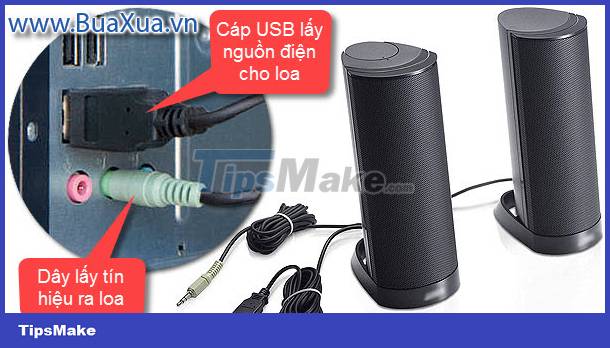 Plug the speaker cable into the audio port on your computer
Plug the speaker cable into the audio port on your computer
If you have external speakers you can connect them to the audio port on the back of your computer case. If you have a headset with a microphone, plug it into the audio port on the front of your computer.
- The audio ports are color coded. Speakers or headphones connect to the green port, and the Microphone connects to the pink port. The blue port is the audio in, which can be used with other types of audio devices.
- Some computer speakers use a USB cable to get power from the computer. You can connect it to any free USB port on the back of the case.
7
Plug in the power cord
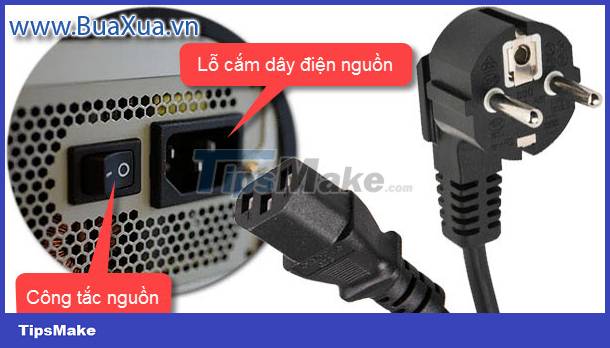 Plug the power cords of the monitor and computer into an electrical outlet
Plug the power cords of the monitor and computer into an electrical outlet
Locate the two power supply cables that came with your computer. Plug the power supply cable first into the power socket on the back of the computer case, and then into an electrical outlet. Next, plug the remaining power cable into the monitor and the power outlet.
- Some monitors do not plug the power cable directly into an electrical outlet, but need to be powered through an AC/DC Adapter.
- Some computer power supplies have an extra switch on the back. Please check to make sure it is in the open state - On , you can turn on the computer.
8
Finish and start the computer
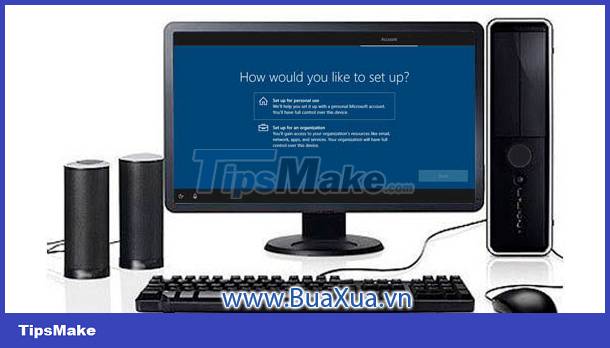 The computer performs the configuration
The computer performs the configuration
Now turn on the screen then press the power button on the front of the case to turn on the computer. The computer will start to boot, the first boot may take some time to configure, and the computer may restart itself a few times. In addition, you may need to declare some information about yourself, the owner of this computer.
After booting is complete, a screen with the operating system's graphical interface will appear. You can now start using your computer.
If you have a printer, scanner, webcam, or other peripherals, you can connect them to your computer at this point. You should see the user manuals of the devices for how to install them. Many peripherals are plug and play, which means they will be recognized by your computer as soon as they are plugged in.
You should read it
- 16 connection ports are commonly found on computers and their functions
- What is a computer?
- Why do some modern computers still have Serial ports?
- Learn to use lesson 3 computer - Basic buttons and ports on the computer
- What is a laptop?
- Computer internal parts
- Learn to use lesson 9 computer - Set up a computer
- How to Network Computers
May be interested
- Instructions for installing the Fire VNG game on your computer
 this is the download link, instructions for installing fire vng and how to log in to the game on your computer, making the fire vng players more comfortable.
this is the download link, instructions for installing fire vng and how to log in to the game on your computer, making the fire vng players more comfortable. - How to prevent others from installing software on Windows computers
 there is a setting on windows that prevents strangers from installing software on your computer, thereby limiting malware infiltration of the computer.
there is a setting on windows that prevents strangers from installing software on your computer, thereby limiting malware infiltration of the computer. - How to Install Windows 8
 this wikihow teaches you how to clean-install windows 8 on your pc, which means that windows 8 will be the only operating system on your computer. the process for installing windows 8 is slightly different than installing windows 8.1,...
this wikihow teaches you how to clean-install windows 8 on your pc, which means that windows 8 will be the only operating system on your computer. the process for installing windows 8 is slightly different than installing windows 8.1,... - Simple Windows 10 computer shutdown timer without installing software
 sometimes you want to hang up to download software or want to listen to music to help you sleep well and want to set a timer to turn off the computer. here is how to set a timer to turn off your windows 10 computer without installing additional software!
sometimes you want to hang up to download software or want to listen to music to help you sleep well and want to set a timer to turn off the computer. here is how to set a timer to turn off your windows 10 computer without installing additional software! - Instructions for installing GameTV Plus on the computer to play AOE, CS 1.1 online
 with the instructions for installing gametv plus here, you will not have trouble with the security system on your computer
with the instructions for installing gametv plus here, you will not have trouble with the security system on your computer - Steps to bypass TPM 2.0 requirement when installing Windows 11
 on windows 11, microsoft requires the computer to have the tpm 2.0 feature. without tpm 2.0, or not activated, you will not be able to install windows 11.
on windows 11, microsoft requires the computer to have the tpm 2.0 feature. without tpm 2.0, or not activated, you will not be able to install windows 11. - How to edit image size fast and simple without installing software
 with large resolution images, we will use it as a computer wallpaper will be irregular and we have to adjust the size to match the resolution of the computer. what if your computer does not install any photo editing software? you can easily resize photos without using the software through the tutorial below.
with large resolution images, we will use it as a computer wallpaper will be irregular and we have to adjust the size to match the resolution of the computer. what if your computer does not install any photo editing software? you can easily resize photos without using the software through the tutorial below. - Instructions for installing and using MEmu on your computer
 instructions for installing and using memu on your computer, memu emulator (or memu play) is a completely free android emulator on windows that allows you to use
instructions for installing and using memu on your computer, memu emulator (or memu play) is a completely free android emulator on windows that allows you to use - What is AMD Radeon installation?
 if you have a gaming computer and decide to choose amd as a graphics card, then you will be familiar with radeon settings or amd catalyst control center.
if you have a gaming computer and decide to choose amd as a graphics card, then you will be familiar with radeon settings or amd catalyst control center. - Error cannot next when installing Windows, what should I do?
 the error of not being able to continue when installing windows is a problem that brings a lot of discomfort to computer users. how to fix it here!
the error of not being able to continue when installing windows is a problem that brings a lot of discomfort to computer users. how to fix it here!










 Getting Started with the Internet
Getting Started with the Internet Connect your computer to the Internet
Connect your computer to the Internet Learn about computer file management systems
Learn about computer file management systems Common file types and extensions
Common file types and extensions Concepts of files and folders
Concepts of files and folders How to install software on the App Store
How to install software on the App Store